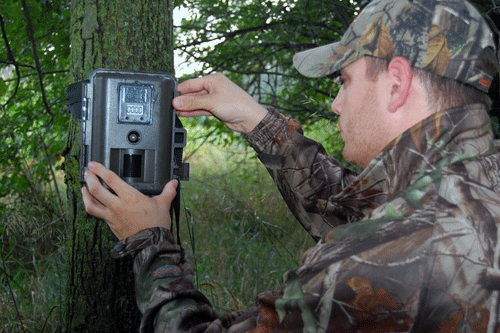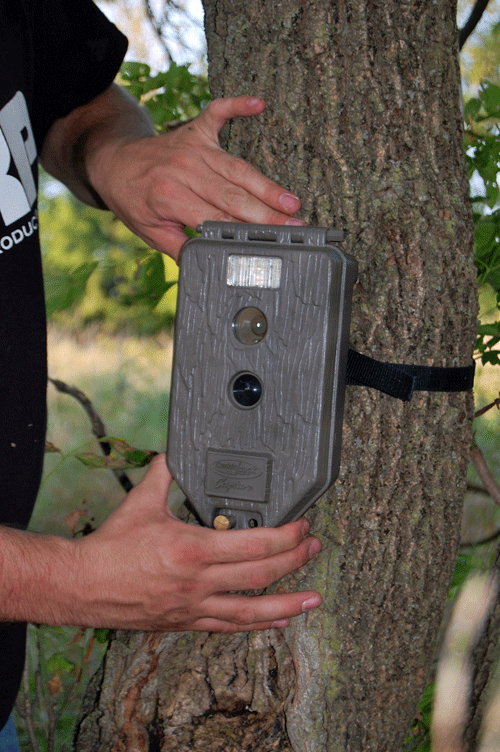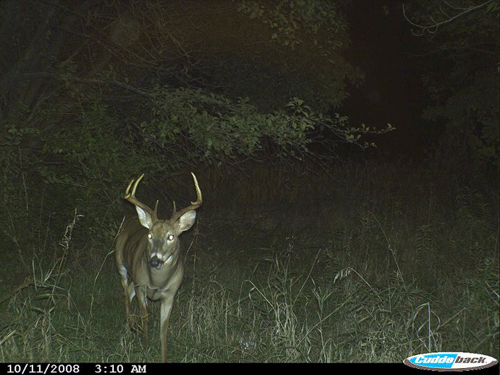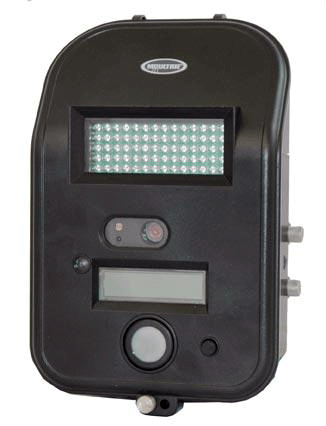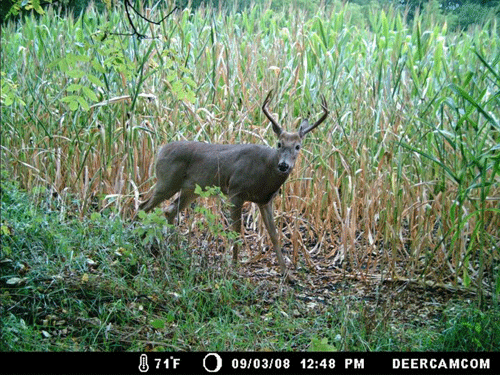LAST UPDATED: May 8th, 2015
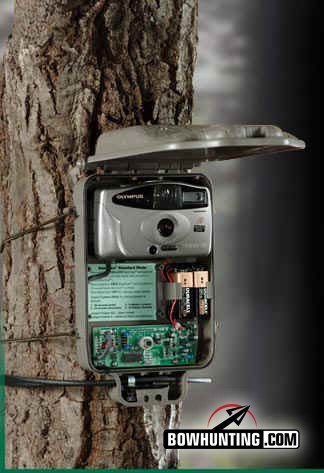
As more and more hunters started using these new-fangled devices more and more manufacturers started popping up and pretty soon the market was full of trail cameras of all makes, models, and sizes. As this happened, loads of information on how to use them, where to use them, and when to use them also started to appear. Many hunters felt that with a trail camera they could pattern that nocturnal trophy buck they’ve been after for years and finally put him on their way. And as many bowhunters sadly found out, that wasn’t quite the case. Trail cameras or not, killing big deer on a consistant basis is still hard!
In the early 2000’s the first digital trail cameras hit the market. Much like their 35mm predecessors, they too were fairly expensive and sometimes unreliable. But as technology got better and prices came down, the digital trail camera quickly replaced the film camera and became the staus quo for scouting cameras. Today there are literally dozens of cameras on the market from a variety of manufacturers that range in price from less than $100 to more than $500. How do you decide which one is right for you?
For me, the first factor in deciding which camera I want to purchase is price. Like most bowhunters, I set a budget for myself when it comes to bowhunting expenses and have to pick and choose which products I really need, and which I can live without. I try to purchase at least one new trail camera each year to either replace old cameras that I am retiring, or to cover additional ground looking for more bucks. I currently own 4 different cameras and try to keep them out from the end of July through the end of January, even into February. This helps me get an accurate feeling for the amount and quality of deer in my hunting area. So in my case, it makes more sense to purchase two less expensive cameras and cover more ground than to purchase one expensive area and risk missing photos that could alert me to a presence of a buck I never knew existed.
I like to use my cameras to get an inventory of the deer on my hunting grounds at any given time during the year, not necessarily to try and pattern and hunt them. I still rely on good old fashioned scouting, planning, and a lot of luck for that!
The second biggest factor for me is trigger speed and reliability. For anyone who owns a trail camera and has experienced the frustration of a blank roll of film or an empty memory card you know what I’m talking about. Its like opening up a present on Christmas day only to find out there’s nothing inside! I have personally owned several brands of trail cameras that were extremely unreliable even under controlled conditions inside my own home when testing them out. Needless to say, I don’t own them any more. Instead I have chosen to do as much online research as possible about the cameras before I buy them. The Internet is a great place to read real-world reviews and find out which products are working, and which aren’t. When it comes to trail cameras, you can read a lot of great information about them right here at Bowhunting.com and also at our sister website Trailcam.com. This will help you make an educated decision as to which cameras to avoid and which are getting good reviews.
With the exception of those two major factors, there are also some secondary features to consider. Battery life can very greatly from camera to camera and determine how often you need to check your cameras, and how much money you will end up spending on batteries over the course of the season. Some cameras allow you to hook up an external battery pack to them for longer run time even in the coldest conditions.
Flash type is another big factor for many bowhunters when choosing a trail camera. With the recent surge in popularity of infrared flash cameras, many people are getting away from traditional flashes which they feel may spook animals, most notably mature animals that are more reclusive and sensitive to human intrusion. Personally, I feel that it’s hit or miss when it comes to flash type. I believe some animals are scared of any type of flash, traditional or infrared, and in fact are scared of trail cameras even during the daytime as well. Naturally, they usually contain human scent from us handling them and some models stick out like a sore thumb on the side of a tree. Despite the fact that they may spook some animals, I personally believe that it doesn’t negatively effect your hunting opportunities provided you play your cards right. Don’t put your cameras right on top of your best hunting spots. Rather, put them in well-used travel corridors or on community scrapes to get a better idea of overall inventory of deer in your area verus trying to find out what deer is walking by your stand, and when. Good hunting techniques will never be replaced by info from scouting cameras, no matter how hard we try.
In conclustion, my two personal favorite cameras right now are the Cuddeback Capture and the Moultrie I40. The Cuddeback is a 3.0 megapixel camera with traditional flash that is super easy to use, has good battery life, and is extremely reliable when it comes to trigger speed and sensitivity. The Moultrie I40 is a 4.0 megapixel camera with infrared flash that takes great photos and has extremely good battery life thanks to its 6 D-cell batteries. The Cuddeback Capture is available here at Bowhunting.com for $199 and the Moultrie I40 for $219.99. For the bowhunter on a budget looking for a good camera that won’t let you down, either of these would be a great choice.
The Cuddeback Capture is a new camera for this year, but has performed very well for me so far.
This photo is a great example of what you can expect from the Cuddeback Capture. Photo clarity and flash range are excellent, and this buck doesn’t seem to mind the flash one bit.
The Moultrie I40 has a lot of great features including infrared flash, superior battery life and great image quality, but it is a bit bulky and cumbersome to use. Once you get past that, it’s a great camera at a great price.
The Moultrie I40 takes great color images during the day, and black and white images at night using the infrared flash.

 By
By 